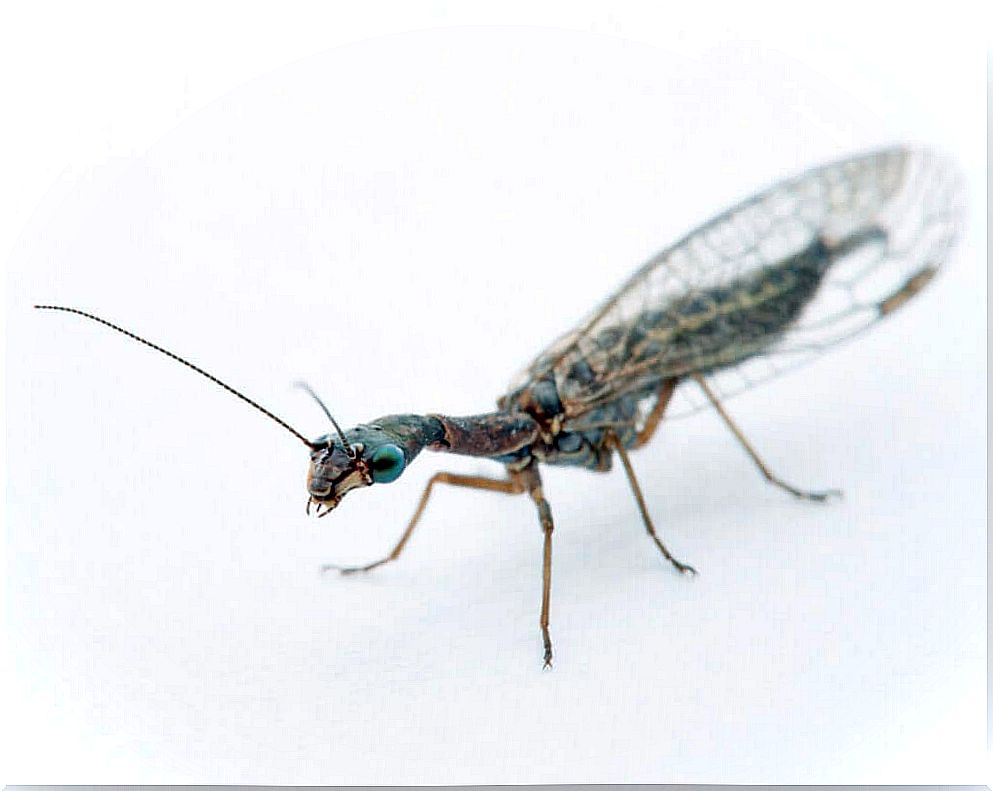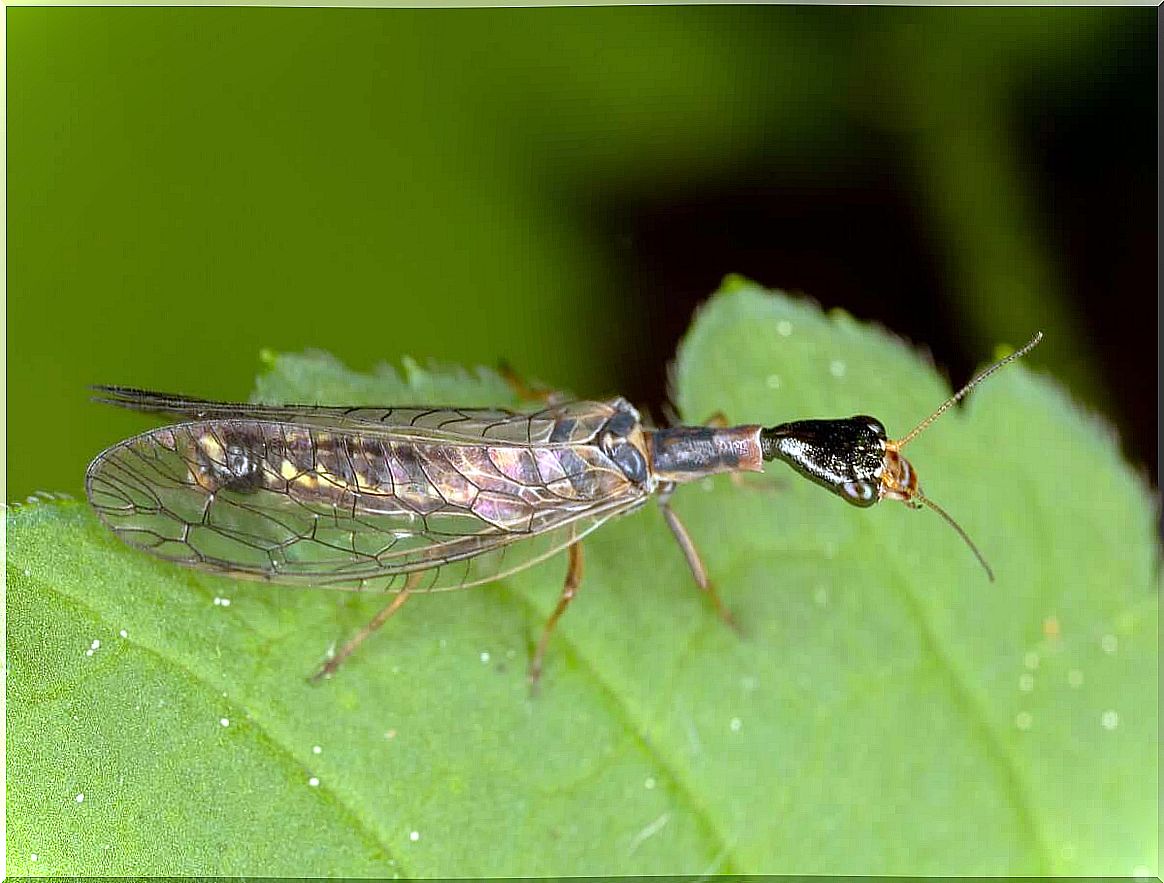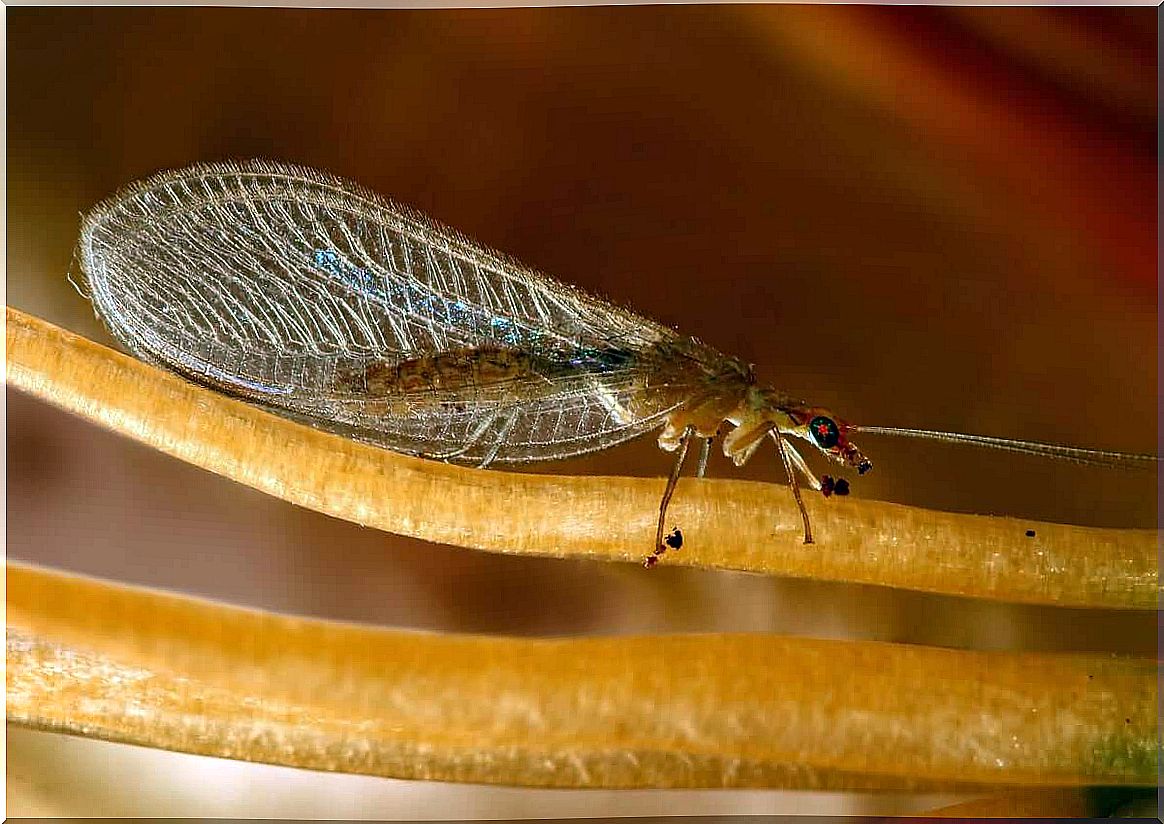The Curious Case Of Pest-controlling Insects

The rafidiopters and lacewings are two of the groups considered pest-controlling insects. They have been used for years in economic entomology and vector control work.
Pest control is a fundamental part of the professional activity of biologists, veterinarians and entomologists. Decades ago it was exclusively a chemical control, thanks to the use of synthetic insecticides. But once its negative effects on health and the environment were discovered, alternative methods were sought.
One of them is pest control through the introduction of other predatory or competitive living beings into the environment. If you want to learn more about this complex process, read on.
The curious case of pest-controlling insects
Next, we will present rafidiopters and lacewings, insects of curious morphology that are considered natural pest controllers.
Raphidioptera Order
Rafadioptera are commonly known as “snake flies” because of their elongated neck, which is nothing more than an extension of their chest. They are an order of holometabolic insects, with transparent wings furrowed by very marked and ornamented veins.
Their larvae live under the bark of conifers, eucalyptus and certain fruit trees, where they devour a multitude of insects that are harmful to ecosystems. Adults are also predators, active during the day.

Chrysopidae family
Green lacewings are given several common names that refer to:
- Adult individuals green color.
- His golden or coppery yellow eyes.
- Its wings, with a very marked venation.
This family of insects is cosmopolitan and its members live mainly in areas of great vegetation and agriculture. Their larvae, again, prey on other soft-bodied arthropods. Even some adults are predators, but only with twilight activity, unlike raphidiopters.
Special mention to the Chrysopa genus
It is the main predatory genus. The green lacewing is the most common in Europe. Its eyes are golden with metallic highlights, but all their colors fade when the insect dies. Another example is the giant chrysalis, whose wingspan can reach five centimeters and can be found in streams or highway sewers.
Both the giant lacewing and the green lacewing are commonly called “stinky flies” because of the strong, unpleasant smell they give off, which protects them from birds and other predators.
How do these pest controlling insects work?
Both groups of invertebrates are considered pest controllers. We will explain the reason below.
Biological pest control
Economic or applied entomology is the study of insects of interest to man, whether for the products they supply or for the impact they have on man’s heritage. And of special interest to these studies:
- The bees.
- Insects that transmit epizootics and zoonoses (diseases that pass from animals to humans).
- The pests.
- Pest-controlling insects.
As most of them are generalist predators, some raphidiopters and lacewings have been used for pest control programs. This has been possible with the implementation of integrated pest control using, among other techniques, biological control through predators.
What mechanism do raphidiopters and lacewings use ?
What is done is a massive production of these insects, to later release them into the natural environment, especially in agricultural production areas where pests are more uncomfortable. It has been successful in controlling mites, butterflies, wasps, ants and aphids, among others.
The main challenge of this mass production of predatory insects is the control of cannibalism during the larval stage. For this, it is necessary to use special substrates, design the installations in a specific way and make releases at the right times.

So are these pest controlling insects useful?
These and other insects, as well as insectivorous birds and other animals, have numerous advantages in controlling pests and vectors. Mainly, they avoid the negative consequences of the accumulation of insecticides in the natural environment, preventing their subsequent presence in plant foods or water, for example.
In addition, production exercises for any of these species can be a method of economic and labor diversification in rural areas where pests settle. Thus, it contributes to rural development, to the protection of the environment and, above all, to the maintenance of biodiversity.









